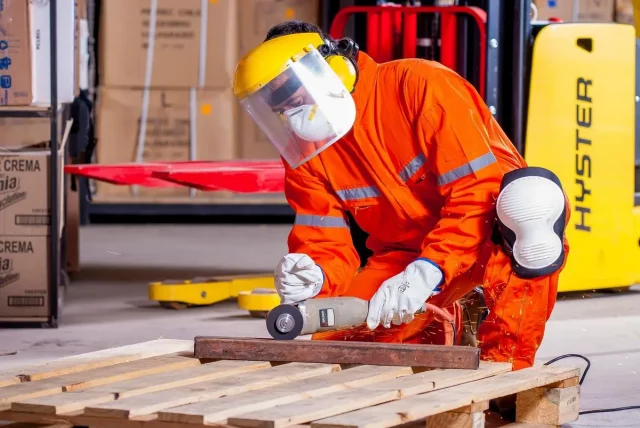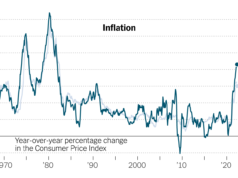In many professions, it is required to wear personal protective equipment or PPE. This type of gear helps to protect the worker from potential hazards while on the job. There are many types of PPE available on the market, and it can be confusing to know which type is right for you. In this blog post, we will discuss the different types of PPE and how to choose the right one for your needs!
How It Is Made?
PPE is typically made from durable materials such as leather, plastics, or metals. It is important to choose a type of PPE that will be able to withstand the specific hazards present in your work environment. For example, if you are working with chemicals, you will need to choose a type of PPE that is resistant to chemical damage. Regarding PPE manufacturing, pay attention to the standards set by international organizations like CE and ISO. These organizations certify that the PPE has been manufactured to meet certain safety standards. These standards must be met in order for the PPE to be effective. The manufacturing process includes multiple steps like cutting, sewing, and assembly. Cutting is usually done with a die, which is a metal template that is used to cut out the shape of the PPE. Once the PPE has been cut out, it is then sewn together. The final step in the manufacturing process is assembly, which is when all the different parts of the PPE are put together.
The Different Types Of PPE
On the market, there are numerous forms of personal protective equipment (PPE). Some of the most common types include gloves, safety glasses, shoes, earplugs or muffs, hard hats, respirators, or coveralls. All of them are used to protect different parts of the body from potential hazards. It is important to choose the right type of PPE for your needs. For example, if you are working with chemicals, you will need to choose a type of PPE that is resistant to chemical damage. Each type of PPE has its own unique benefits and drawbacks.
Gloves
Gloves are a type of PPE that is worn on the hands. They are typically made from leather, latex, or metal. Gloves can protect the hands from chemicals, cuts, or burns. However, they can also make it difficult to grip objects. Some disadvantages are that they can be hot and uncomfortable to wear, and they can also make it difficult to feel objects. The most commonly used ones are nitrite gloves, rubber gloves, and leather gloves.
Safety Glasses
Safety glasses are another type of PPE that is worn on the head. They are designed to protect the eyes from flying debris, chemicals, or other hazards. However, they can also make it difficult to see. The disadvantages of safety glasses are that they can be uncomfortable to wear, and they can also fog up. There are different types of safety glasses available on the market, including clear, tinted, and polarized.
Shoes
Shoes are a type of PPE that is worn on the feet. They are typically made from leather or metal. Shoes can protect the feet from cuts, burns, or slips. However, they can also make it difficult to move around and can be uncomfortable to wear. Widely used ones are steel-toe boots, which are designed to protect the feet from falling objects.
Earplugs Or Muffs
Earplugs or muffs are a type of PPE that is worn on the ears. They are designed to protect the ears from loud noises. However, they can also make it difficult to hear. The disadvantages of earplugs or muffs are that they can be uncomfortable to wear, and they can also make it difficult to communicate with others. The best ones are made from foam or silicone. These earplugs can be inserted into the ear canal or worn over the ear.
Hard Hats
Hard hats are a type of PPE that is worn on the head. They are designed to protect the head from falling objects or other hazards. However, they can also be hot, uncomfortable to wear, and can obstruct your vision. Many people use hard hats when they are working in construction or other dangerous environments.
Respirators
Respirators are a type of PPE that is worn over the mouth and nose. They are designed to protect the lungs from airborne hazards such as dust, fumes, or chemicals. However, they can also make it difficult to breathe. Respirators come in different types, including half-face respirators and full-face respirators. Half-face respirators only cover the nose and mouth, while full-face respirators also protect the eyes.
Coveralls
Coveralls, vests, and bodysuits are types of PPE that are worn over clothes. They are designed to protect the body from hazardous materials such as chemicals or debris. However, similarly to previously mentioned PPE equipment, they can also be hot and uncomfortable to wear. They are typically made from cotton or denim. Coveralls can protect the body from cuts, burns, or chemicals. Vests can protect the chest and back from impact or penetration. Bodysuits can protect the entire body from hazardous materials. They can be made from a variety of materials, including Kevlar or Tyvek. Bulletproof vests are made of Kevlar, a type of synthetic fabric. Tyvek is a type of fabric that is often used in hazardous waste suits. Both are effective in protecting the body from harmful materials.
How To Choose The Right Type Of PPE
When choosing the right type of PPE for your needs, it is important to consider the specific hazards present in your work environment. You will also need to consider the comfort and fit of the PPE. It is important to choose a type of PPE that you will be able to wear for long periods of time without feeling uncomfortable. You should also make sure that the PPE does not obstruct your vision or hearing. Finally, you should always consult with your supervisor or safety officer to make sure that you are choosing the right type of PPE for your needs.
Personal protection equipment (PPE) is an essential component of any workplace safety strategy. There are a variety of different types of PPE available, and it is important to choose the right type for your needs. PPE can be uncomfortable to wear, but it is necessary for many work environments. Thanks for reading!














